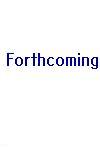
|
|
1932 Dutton edition
|
|

|
|
Ramble House POD edition
|
|
Harry Stephen Keeler
The Box From Japan
New York: E. P. Dutton, 1932
765 pages, hardcover
Ramble House reprint edition
Shreveport (LA): Ramble House, POD
118 pages, softcover (Octavo format)
That's right, folks. Seven-hundred-and-sixty-five small-print pages, spinning a very convoluted tale in LXXII numbered chapters -- with an intermission (actually a commercial break) between Chapters XLI and XLII bidding the reader to "Stop!" and proceed only after deducing a tentative solution to the mystery at this point.
The front flap of the dust jacket of the first edition reads like this.
HARRY STEPHEN KEELER PROJECTS HIS MIND INTO THE FUTURE AND UNWINDS A HIGH-POWERED MYSTERY YARN OF THE YEAR 1942! Television in the coming decade furnishes the initial episode in this unique plot by the mystery-writer who, according the American News Company, is now ranked as one of the "Big Four" with Wallace, Oppenheim and Van Dine.
An unclaimed box from Japan in an Express Company auction sale, its counterpart in London revealed by a new transatlantic television process, and a cable of inquiry are the prelude to a wave of murder, violence and intrigue in Chicago. Keeler takes a Gargantuan step ahead of his rivals in this new thriller.
Ramble House's blurb reads like this.
THE BOX FROM JAPAN
Complete In One Volume
The year is 1942 -- the near future. We now have 13 months per year, the world is coming to rely on giant saguaro cacti from Mexico for food, 3-D television is almost a reality, and wouldn't you know it? Japan, Germany and (gasp!) Mexico are scheming to take over the world. And their plans involve the now defunct Panama Canal and a new canal through Nicaragua. And there's something about an unusual blue dye from ancient China that fits into this incredible scheme somewhere. With a premise like this, it's got to be the longest and most convoluted webwork mystery ever written. And Harry wrote it in 1932! It has a great cover by Gavin O'Keefe.
NOTE: This is not a Ramble House A6-sized handcrafted paperback. It's a 668-page 5.5"x8.5" trade paperback made by a Docutech machine. It's heavy, full of words -- 312,393 of them to be exact -- and may be the damnedest mystery novel ever written.
Some facts about the advent of television
During the 1920s, a number of crude electro-mechanical television systems were publicly demonstrated and reported in the news. By 1930-1931, when Keeler would have been writing The Box From Japan, some purely electronic systems of image acquisition, transmission, and display had been developed.
To be continued.
|
